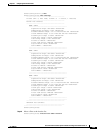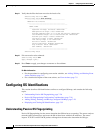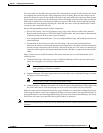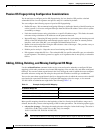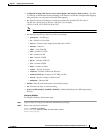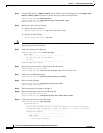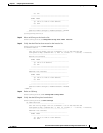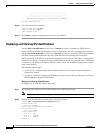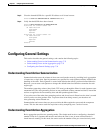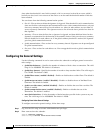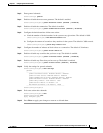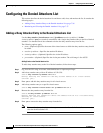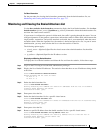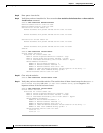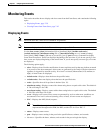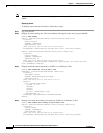
7-33
Cisco Intrusion Prevention System CLI Sensor Configuration Guide for IPS 7.1
OL-19892-01
Chapter 7 Configuring Event Action Rules
Configuring General Settings
Step 3 Clear the learned OS IDs for a specific IP address on all virtual sensors.
sensor# clear os-identification learned 192.0.2.0
Step 4 Verify that the OS IDs have been cleared.
sensor# show statistics os-identification
Statistics for Virtual Sensor vs0
OS Identification
Configured
Imported
Learned
Statistics for Virtual Sensor vs1
OS Identification
Configured
Imported
Learned
sensor#
Configuring General Settings
This section describes the general settings, and contains the following topics:
• Understanding Event Action Summarization, page 7-33
• Understanding Event Action Aggregation, page 7-33
• Configuring the General Settings, page 7-34
Understanding Event Action Summarization
Summarization decreases the volume of alerts sent out from the sensor by providing basic aggregation
of events into a single alert. Special parameters are specified for each signature and they influence the
handling of the alerts. Each signature is created with defaults that reflect a preferred normal behavior.
However, you can tune each signature to change this default behavior within the constraints for each
engine type.
The nonalert-generating actions (deny, block, TCP reset) go through the filters for each signature event
unsummarized. The alert-generating actions are not performed on these summarized alerts; instead the
actions are applied to the one summary alert and then put through the filters.
If you select one of the other alert-generating actions and do not have it filtered out, the alert is created
even if you do not select produce-alert. To prevent alerts from being created, you must have all
alert-generating actions filtered out.
Summarization and event actions are processed after the Meta engine has processed the component
events. This lets the sensor watch for suspicious activity transpiring over a series of events.
Understanding Event Action Aggregation
Basic aggregation provides two operating modes. The simple mode involves configuring a threshold
number of hits for a signature that must be met before the alert is sent. A more advanced mode is
timed-interval counting. In this mode, the sensor tracks the number of hits per second and only sends



